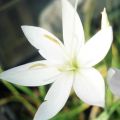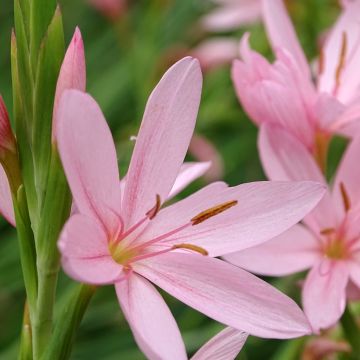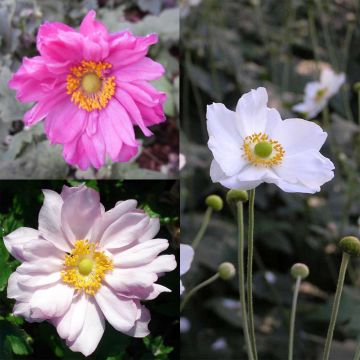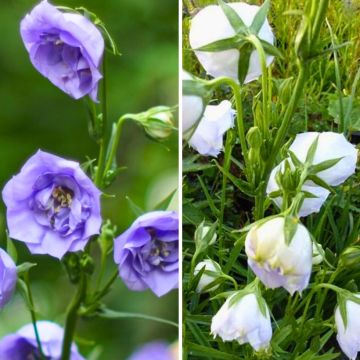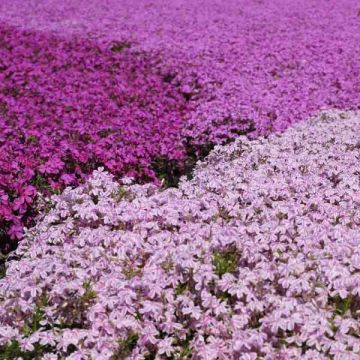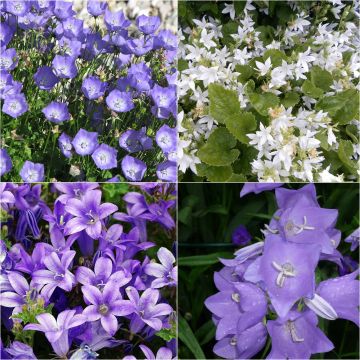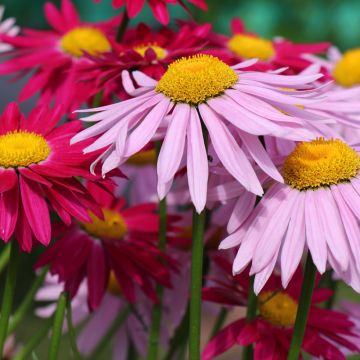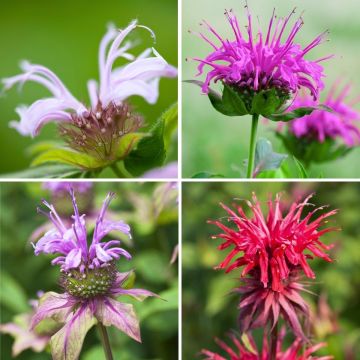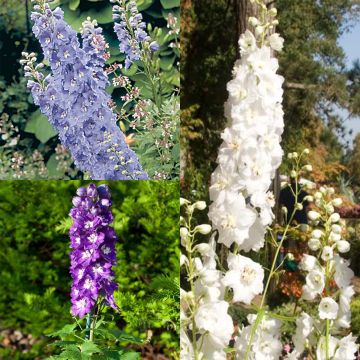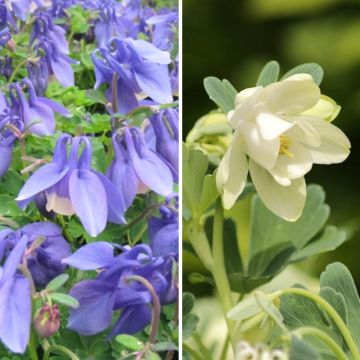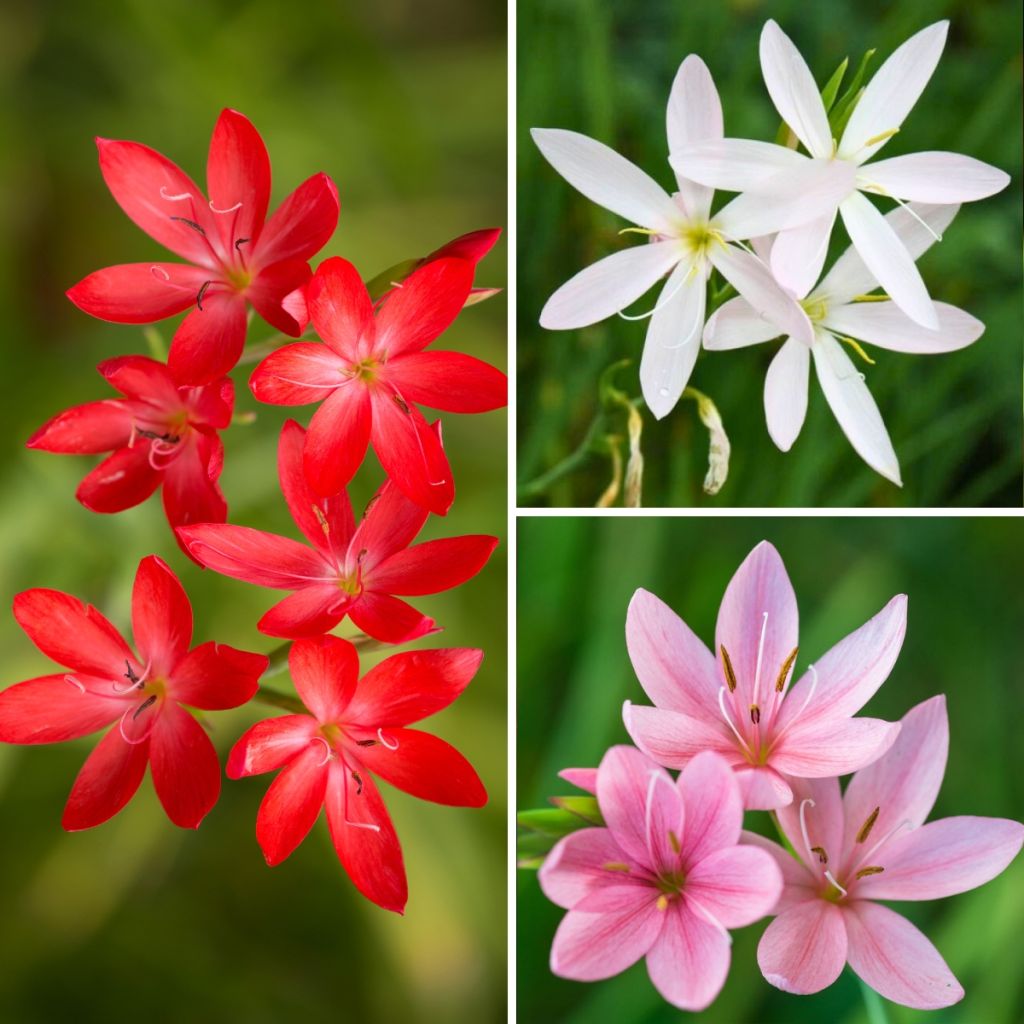

Collection of three Hesperantha coccinea - Crimson Flag
Collection of three Hesperantha coccinea - Crimson Flag
Hesperantha coccinea Major, Alba, Rosea
Crimson Flag, Scarlet River Lily, African Corn Lily, Schizostylis
This item cannot be shipped to the selected country
Delivery charge from €5.90
Delivery to Corse prohibited
More information
Schedule delivery date,
and select date in basket
This plant carries a 12 months recovery warranty
More information
We guarantee the quality of our plants for a full growing cycle, and will replace at our expense any plant that fails to recover under normal climatic and planting conditions.
From €5.90 for pickup delivery and €6.90 for home delivery
Express home delivery from €8.90.
Delivery to Corse prohibited: UE law prohibits the import of this plant from mainland France to Corse as part of the fight against Xylella fastidiosa. Please accept our sincere apologies.
More information
Does this plant fit my garden?
Set up your Plantfit profile →
Collection items (3 plants)
Description
This Hesperantha collection, also known as Cape lilies, is interesting for its late flowering period, from September to November. These rhizomatous perennial plants from the iridaceae family come in three different colour varieties: Hesperantha coccinea 'Major' with bright red flowers, 'Alba' with white flowers, and Rosea with pink flowers. Their dense and spreading clumps of foliage persist more or less throughout winter. Apart from being relatively hardy, these plants are easy to grow in sunny, moist soils, both in flower beds and in pots. They can tolerate temperatures as low as -8/-10°C and prefer slightly acidic to neutral soils.
The collection consists of:
1 x Hesperantha coccinea 'Major': This variety stands out with its scarlet red flowers and can reach a height of 60 cm. It is ideal for adding a touch of intense colour in autumn.
1 x Hesperantha coccinea 'Alba': This elegant variety has pure white flowers. It is slightly shorter than its 'Major' counterpart, with a height of approximately 50 cm.
1 x Hesperantha coccinea 'Rosea': Its pink flowers give it a special charm, and it reaches a similar size to the 'Alba' variety, approximately 50 cm. It is perfect for enhancing the colour contrast within our Schizostylis collection.
The best time to plant these frost-tender perennials is in spring. They thrive in flower beds, borders, or containers. The 'Major' variety, which is slightly taller, should be placed at the back of the other two. Plan for 6 to 8 plants per square metre, with a distance of 30 to 40 cm between each plant.
To create a harmonious combination in a wet meadow or along a bank, associate this collection with plants that thrive in similar conditions. Lobelia fulgens 'Queen Victoria' with its dark red flowers and bronze foliage pairs perfectly with the red, pink, and white tones of the Cape lilies. Iris pseudacorus, with its bright yellow flowers, adds a touch of light to the ensemble. Carex elata 'Aurea', or golden sedge, enriches the textures and colours of the flower bed with its luminous foliage.
Report an error about the product description
Flowering
Foliage
Plant habit
Botanical data
Hesperantha
coccinea
Major, Alba, Rosea
Crimson Flag, Scarlet River Lily, African Corn Lily, Schizostylis
Schizostylis coccinea
Cultivar or hybrid
Other Schizostylis
Planting and care
Plant the Cape Lily in a sunny location in humus-bearing or clayey soil that remains slightly moist, even waterlogged. Protect it from cold winds. Prune the foliage and cover the soil with organic mulch in winter in slightly cold regions. This plant appreciates humid areas, next to a pond, with the rootstock able to be planted up to 10 cm below the water surface. Hardiness: -8 to -10 °C at its lowest.
Cultivation in pots is possible, in a rich substrate kept moist. The pots will be overwintered frost-free, in a bright room or an unheated greenhouse. Reduce watering slightly in winter.
Dividing the clumps is necessary every 3 or 4 years, to prevent the plant from weakening.
The Cape Lily is not very susceptible to diseases and pests.
Planting period
Intended location
Care
This item has not been reviewed yet - be the first to leave a review about it.
Perennial collections
Haven't found what you were looking for?
Hardiness is the lowest winter temperature a plant can endure without suffering serious damage or even dying. However, hardiness is affected by location (a sheltered area, such as a patio), protection (winter cover) and soil type (hardiness is improved by well-drained soil).

Photo Sharing Terms & Conditions
In order to encourage gardeners to interact and share their experiences, Promesse de fleurs offers various media enabling content to be uploaded onto its Site - in particular via the ‘Photo sharing’ module.
The User agrees to refrain from:
- Posting any content that is illegal, prejudicial, insulting, racist, inciteful to hatred, revisionist, contrary to public decency, that infringes on privacy or on the privacy rights of third parties, in particular the publicity rights of persons and goods, intellectual property rights, or the right to privacy.
- Submitting content on behalf of a third party;
- Impersonate the identity of a third party and/or publish any personal information about a third party;
In general, the User undertakes to refrain from any unethical behaviour.
All Content (in particular text, comments, files, images, photos, videos, creative works, etc.), which may be subject to property or intellectual property rights, image or other private rights, shall remain the property of the User, subject to the limited rights granted by the terms of the licence granted by Promesse de fleurs as stated below. Users are at liberty to publish or not to publish such Content on the Site, notably via the ‘Photo Sharing’ facility, and accept that this Content shall be made public and freely accessible, notably on the Internet.
Users further acknowledge, undertake to have ,and guarantee that they hold all necessary rights and permissions to publish such material on the Site, in particular with regard to the legislation in force pertaining to any privacy, property, intellectual property, image, or contractual rights, or rights of any other nature. By publishing such Content on the Site, Users acknowledge accepting full liability as publishers of the Content within the meaning of the law, and grant Promesse de fleurs, free of charge, an inclusive, worldwide licence for the said Content for the entire duration of its publication, including all reproduction, representation, up/downloading, displaying, performing, transmission, and storage rights.
Users also grant permission for their name to be linked to the Content and accept that this link may not always be made available.
By engaging in posting material, Users consent to their Content becoming automatically accessible on the Internet, in particular on other sites and/or blogs and/or web pages of the Promesse de fleurs site, including in particular social pages and the Promesse de fleurs catalogue.
Users may secure the removal of entrusted content free of charge by issuing a simple request via our contact form.
The flowering period indicated on our website applies to countries and regions located in USDA zone 8 (France, the United Kingdom, Ireland, the Netherlands, etc.)
It will vary according to where you live:
- In zones 9 to 10 (Italy, Spain, Greece, etc.), flowering will occur about 2 to 4 weeks earlier.
- In zones 6 to 7 (Germany, Poland, Slovenia, and lower mountainous regions), flowering will be delayed by 2 to 3 weeks.
- In zone 5 (Central Europe, Scandinavia), blooming will be delayed by 3 to 5 weeks.
In temperate climates, pruning of spring-flowering shrubs (forsythia, spireas, etc.) should be done just after flowering.
Pruning of summer-flowering shrubs (Indian Lilac, Perovskia, etc.) can be done in winter or spring.
In cold regions as well as with frost-sensitive plants, avoid pruning too early when severe frosts may still occur.
The planting period indicated on our website applies to countries and regions located in USDA zone 8 (France, United Kingdom, Ireland, Netherlands).
It will vary according to where you live:
- In Mediterranean zones (Marseille, Madrid, Milan, etc.), autumn and winter are the best planting periods.
- In continental zones (Strasbourg, Munich, Vienna, etc.), delay planting by 2 to 3 weeks in spring and bring it forward by 2 to 4 weeks in autumn.
- In mountainous regions (the Alps, Pyrenees, Carpathians, etc.), it is best to plant in late spring (May-June) or late summer (August-September).
The harvesting period indicated on our website applies to countries and regions in USDA zone 8 (France, England, Ireland, the Netherlands).
In colder areas (Scandinavia, Poland, Austria...) fruit and vegetable harvests are likely to be delayed by 3-4 weeks.
In warmer areas (Italy, Spain, Greece, etc.), harvesting will probably take place earlier, depending on weather conditions.
The sowing periods indicated on our website apply to countries and regions within USDA Zone 8 (France, UK, Ireland, Netherlands).
In colder areas (Scandinavia, Poland, Austria...), delay any outdoor sowing by 3-4 weeks, or sow under glass.
In warmer climes (Italy, Spain, Greece, etc.), bring outdoor sowing forward by a few weeks.


































